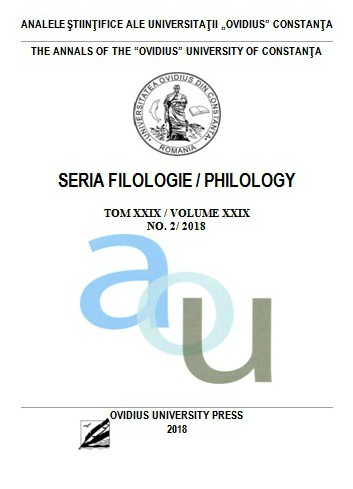MENTAL AND MORAL MONSTROSITY IN SHAKESPEARE’S OTHELLO
MENTAL AND MORAL MONSTROSITY IN SHAKESPEARE’S OTHELLO
Author(s): Mihaela Ilinca TanaseleaSubject(s): Language and Literature Studies, Studies of Literature
Published by: Ovidius University Press
Keywords: Othello; perspectivism; animal imagery; Cyprus; meta-theatricality; monstrosity; rhetoric; Venice;
Summary/Abstract: This essay examines the ways in which the notions of monstrosity and the monstrous arenegotiated during the dramatic interaction in Shakespeare’s Othello. While Renaissance theories of the body(Michel de Montaigne and Francis Bacon) acknowledged that physical and mental deformity were interlinkedand influenced each other, Shakespeare’s play destabilizes all preconceived constructions of racial othernessand mental monstrosity by having most characters use animal imagery and display monster-like features atthe emotional level. Medieval notions of monstrous creatures existing at the margins of the world, drawing ontravel narratives, were gradually replaced in Renaissance discourses by an understanding of the monstrousdepending on psychological traits. As a result, in Shakespeare’s Othello, it is not only Iago who displaysfeatures of psychological and moral deformity, but also the other characters, including Othello, who useanimal imagery that is suggestive of base impulses leading to distorted perceptions of reality. During dramaticinteraction, most characters undergo a subtle transformation suggesting the grotesque features of animaginary medieval bestiary, under the influence of Iago’s Machiavellian rhetoric. The paradoxical oppositionbetween Othello’s unchecked passion and Iago’s apparent rationality creates an imaginary “beast with twobacks”—a rational/irrational monster-like creature whose existence challenges previous notions of mentaland moral deformity. In the metatheatrical context created by Iago’s psychological manipulation, Othellosuffers a transformation and becomes a monstrous figure because emotions lie at the threshold betweenrational and irrational behaviour, while deformity is not a trait of the body, but of the mind.
Journal: Analele Universităţii Ovidius din Constanţa. Seria Filologie
- Issue Year: XXIX/2018
- Issue No: 2
- Page Range: 65-74
- Page Count: 10
- Language: English

